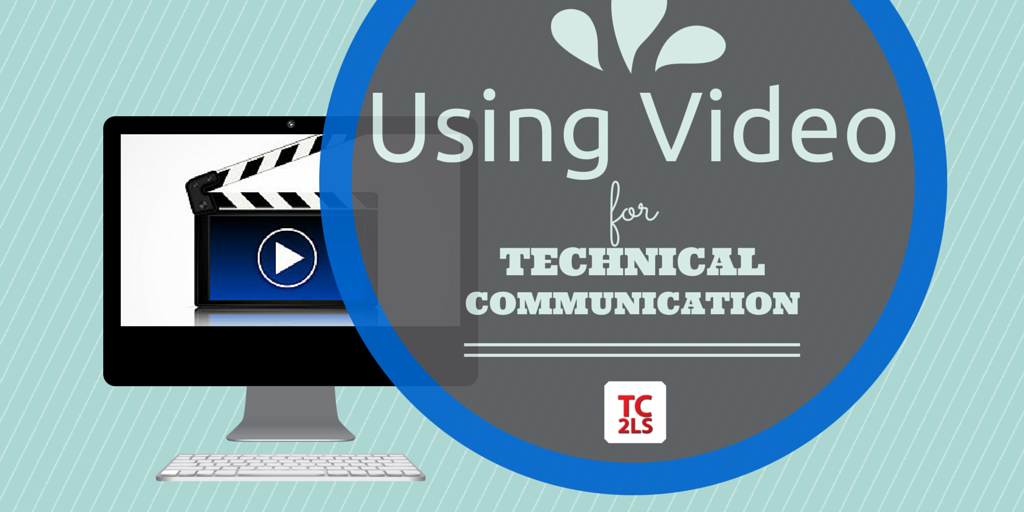
Using Video for Technical Communication
I’m getting ready for my upcoming summer school session for STC on Tech Comm Video, so I figured I’d create a series of posts to share some of the high points with the TC2LS community. If you’re interested, the class will be three-hour online sessions for six consecutive Tuesdays, and starts on Tuesday, August 5th.To sign up, just click on the link above. STC and non-STC folks are welcome! Here’s the overview and details of the sessions, with more detailed content than the posted web outline.
PRODUCING EFFECTIVE VIDEO DOCUMEN TATION
TATION
Presented by Matt Sullivan
OVERVIEW
What does it mean to produce video documentation, anyway? What makes it effective? There are a number of tools, methods, and production techniques that make up the answer to that question. Depending on who has requested the video documentation, how will it be used, and the timeframe and expense to accomplish the project, you might be “asked” to produce the video using:
- a video or webcam with QuickTime or other software
- a tool for enhancing PowerPoint presentations like Adobe/Articulate Presenter products
- screencasts or webinar recording software like Connect, WebEx, or GoToMeeting
- interactive simulation software like Captivate
- working with interactive 3D
This six-week course provides exposure to each of these methods, with best practices provided by Matt Sullivan, who teaches video techniques and technical communication online as a core part of his business. In addition to the topics listed above, you will learn proper techniques for audio recording and editing, video lighting, and publishing to a variety of servers and formats.
SESSION DESCRIPTIONS
Session 1: Discussion of video documentation styles and optimizing audio setup
In this initial session, we will see examples of each of the video techniques presented in sessions 2-6. We will discuss the needs of individual attendees, and explore the options available.
This first session is about becoming familiar with what is available and getting to know the audience. Video documentation is an effective way to communicate complex tasks, and to connect with your end audience. There are free or inexpensive tools (under $100, though some are subscription based ) to do everything you need, and I use:
- Live video
- phone
- webcam
- DSLR (awaiting budget approval from my wife!)
- GoPro
- Call Recorder for Skype
- Screencast
- Adobe Presenter
- ScreenFlow
- QuickTime
- Adobe Connect
- GoToMeeting (including Training and Webinar products)
- Combinations of live video and screencast
- Adobe Presenter
- ScreenFlow
Depending on the need, I post the resulting video to YouTube (or another streaming media server) for use online (including WordPress and social media platforms. I can also place the video into a content tool like FrameMaker or RoboHelp (embedding the file directly, or linking to the online content. After reviewing output from a cross-section of the applications listed above, we will discuss the goals and options available to each of the attendees.
Session 2: Video lighting, video blogs using popular webcam recording options Video blogs have these main components:
- relevant content
- good video
- good lighting
- good audio
Miss any of those items, and you’re likely going to lose your audience. In this session, we’ll focus on lighting and video. We’ll discuss
- proper 3-point lighting
- background options
- webcam calibration software
With just a little effort, you can create great talking head videos, without turning your office into a sound stage!
Session 3: Enhanced PowerPoint and scenario-based training with audio and video
Face it…PPTX is here to stay! You might as well embrace it (see http://www.articulate.com/rapid-elearning/7-reasons-why-powerpoint-doesnt-suck/) And besides, with the amount of PPTX content most folks have available, it makes sense to repurpose it for tech comm. In session 3 we’ll show what you can do with Adobe Presenter, a plug-in available for PowerPoint. While this doesn’t replace an Adobe Presenter training class, I will do an overview of Presenter itself, including:
- Characters
- Interactions
- Audio
- Video
- Defining Presenters
- Skin customization
Get ready to put all that PPTX content to use, without having to cut ‘n’ paste into another editor/content tool.
Session 4: Screencasting and webinars
Screen recordings and webinar recordings are a great way to repurpose content, and to quickly document sophisticated tasks. Many different tools exist, so I’ll demo a few of my favorites:
- Apple QuickTime (Mac)
- ScreenFlow (Mac)
- Adobe Presenter Video Express (Windows)
- Adobe Connect (Mac and Windows)
Ideally, video will be accompanied with text, but either way, using video to support written tech comm improves understanding and retention.
Session 5: Demonstrations and simulations
This is much different from screen recordings and other forms of video! Demonstrations and simulations let you create intricate computer presentations that are much more interactive than other forms of video. Specifically, we’ll look at Adobe Captivate as a way to create rich media that meshes perfectly with your learner’s skill set and comprehension. How can I make that claim? Because regardless of the pace of the learner, the simulation won’t proceed until the learner has confirmed that they understand the point of knowledge delivered within the project. If you document computer interaction but don’t yet do this, this will change the way you work!
Session 6: 3D and wrap-up/review of topics and projects
Embedded 3D is an interesting topic, and one that has slowly been gaining traction for the last 10 years. We’ll start this last session with an overview of placing 3D from CAD/CAM software into packages like Adobe FrameMaker and Adobe RoboHelp, and then seeing the resulting electronic output. We will also review the previous sections, and look at any projects you’ve been able to work on, or answer any remaining questions you have related to tech comm video
PRESENTER BIOGRAPHY
Matt Sullivan focuses on the intersection of tech comm, eLearning, and content marketing. In addition to presenting at national conferences on tech comm, he helps folks manage and deliver their content to elearning and mobile platforms. His blog at mattrsullivan.com has lots of useful information on these topics. He is the track manager for the 2014 Summit’s Content Development and Delivery track and presents each year to local STC chapters and online communities. Matt is an online trainer for STC and other national training organizations. His classes range from Adobe tools training (FrameMaker, RoboHelp, Captivate), to tech comm video production, to online branding via social platforms. You can connect with Matt on most social platforms by searching for his mattrsullivan username.

Join over 9,300 of your peers and get my latest content sent to you for free, along with some of my all-time favorites.

